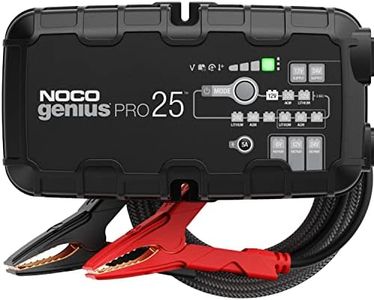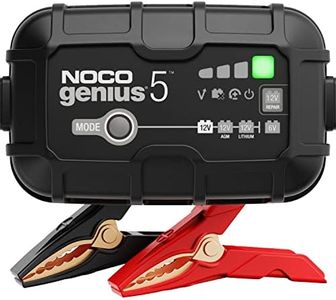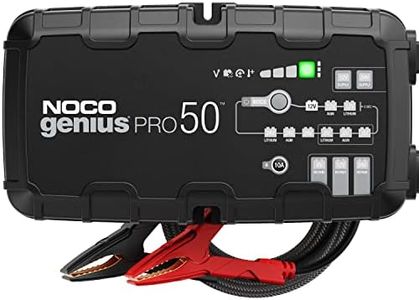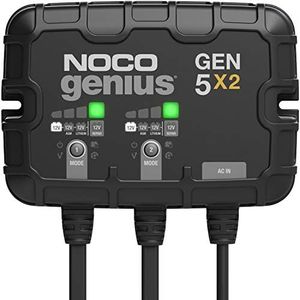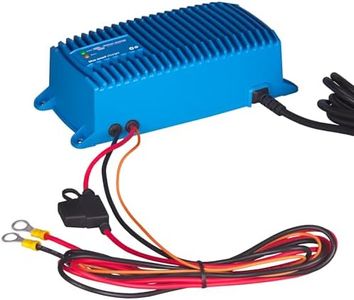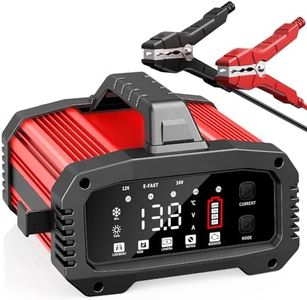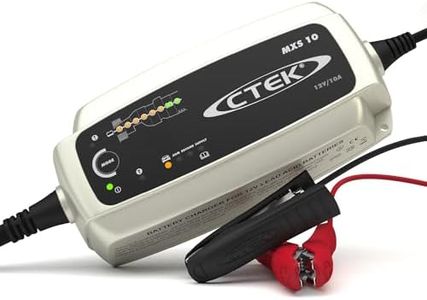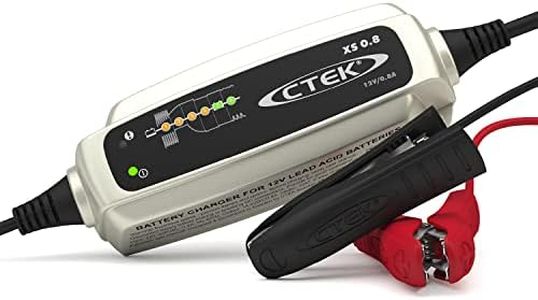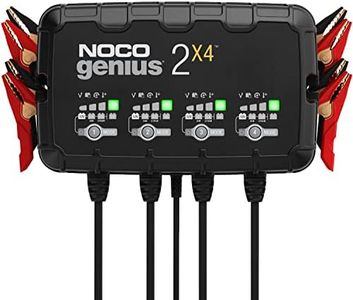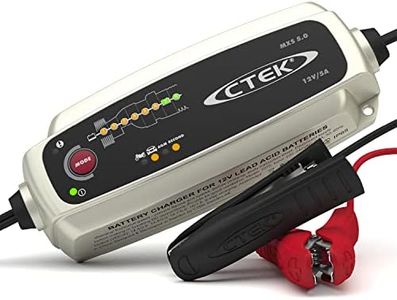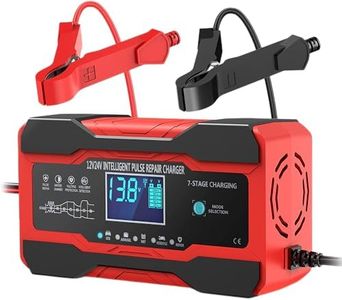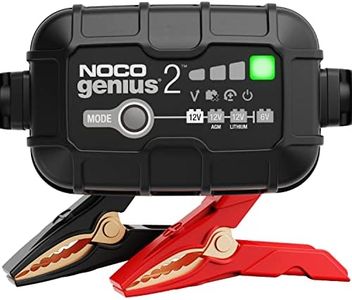We Use CookiesWe use cookies to enhance the security, performance,
functionality and for analytical and promotional activities. By continuing to browse this site you
are agreeing to our privacy policy
10 Best Agm Battery Chargers
From leading brands and best sellers available on the web.Buying Guide for the Best Agm Battery Chargers
When choosing an AGM battery charger, your goal is to keep your battery healthy, charged efficiently, and protected from damage. AGM batteries (Absorbent Glass Mat) are sensitive to charging method, so choosing the right charger ensures long battery life and reliable performance. Knowing what features matter – and why – will help you make the right choice for your needs, whether you're keeping car, motorcycle, boat, or RV batteries topped up.Charging Amperage (Current Output)Charging amperage refers to the amount of current, measured in amps, the charger can deliver to your battery. This matters because a too-high current can overheat and damage a battery, while too low a current will charge it too slowly. Chargers come in low (less than 2A), medium (2-10A), and high (10A and above) output levels. For smaller batteries (like motorcycles or lawnmowers), a low or medium amperage is safest and helps prevent overcharging. For larger batteries (cars, RVs, boats), a medium to high amperage is faster, but make sure your battery’s manufacturer allows it. Choose a charger with an output suitable for your battery size and your patience: smaller batteries need gentler, slower charging, while larger batteries can handle more and charge faster.
Voltage CompatibilityVoltage compatibility tells you whether the charger matches the battery’s voltage, usually 6V or 12V for most consumer batteries, though some large systems use 24V. This is vital because using an incorrect voltage can permanently damage the battery or the charger. Many modern chargers can switch between voltage options, but some are fixed to a single voltage. Check the voltage of your battery and ensure the charger supports it. Always match the charger's voltage settings with the battery’s requirements.
Charging Modes and Safety FeaturesCharging modes refer to how the charger handles different stages of charging, like bulk, absorption, maintenance (float), or reconditioning. These are important because AGM batteries benefit from a multi-stage charging process for optimal life and performance, and to avoid overcharging. Safety features like reverse polarity protection and spark protection prevent accidents and protect both the user and the battery. Look for a charger that specifically lists AGM-compatible modes and built-in safety features, especially for regular, unattended, or long-term maintenance charging.
Automatic Shutoff and Maintenance ModeAutomatic shutoff means the charger turns itself off, or shifts to a maintenance (float) mode, once the battery is full. This is essential for AGM batteries because leaving them on constant charge risks damaging them through overcharging. Maintenance or float mode keeps the battery at a safe, full charge for long periods without harm. If you want to keep a battery charged over weeks or months (like for stored vehicles or backup systems), pick a charger with a reliable maintenance mode.
Compatibility with Battery TypeNot all chargers work well with all battery chemistries. AGM batteries need different charging voltages than flooded lead-acid or gel batteries. Some chargers are fully automatic for all types, while others require manual settings. It’s critical to choose a charger that clearly states AGM compatibility, so the charging algorithm doesn’t harm your battery.
Portability and DesignPortability and design cover the size, weight, cable length, and ruggedness of the charger. If you need to take your charger on the road, or want to use it in different locations, a lightweight, compact model will be more convenient. If your charger will live in your garage or workshop, size may matter less. Also consider cable length and type of clamps: longer cables are useful for awkwardly placed batteries, while sturdy clamps ensure safe, reliable connections.
